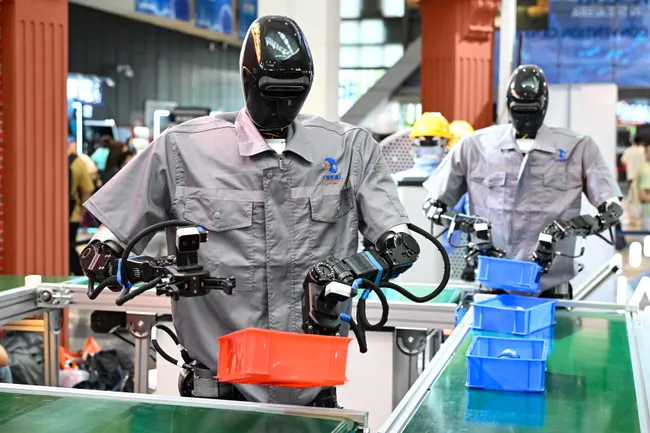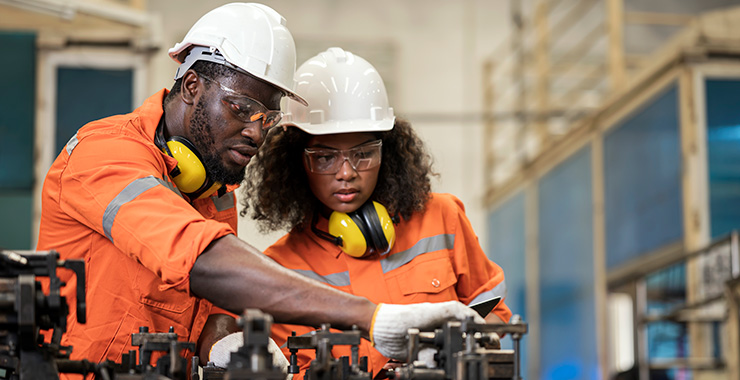Microsoft Research has just published 40 jobs least affected by AI and 40 jobs most affected by AI—data that gives professionals crucial guidance. Based on 200,000 real user interactions with Copilot, the analysis reveals which occupations remain hardest to automate in this era of rapid AI development. AGIYes observes that AI currently excels at “write, search, talk” tasks, while it remains almost powerless when the job requires “hands, feet, or genuine emotion.” This insight offers a valuable compass for anyone planning a career path.
Microsoft Releases 40 Jobs Least Affected by AI
Microsoft researchers collected and analyzed over 200,000 real user–Copilot logs, then used complex algorithms to assign each occupation an “AI suitability score.” The lower the score, the less likely the job is to be affected by AI.
The study shows that AI performs best in three task categories: writing (content generation, copywriting), information retrieval (data queries, document analysis), and language tasks (translation, speech-to-text). Occupations demanding fine motor control, complex environmental judgment, or deep interpersonal interaction remain largely beyond AI’s reach.
The key value of this research is that it rests on real usage data, not theoretical speculation, providing an objective assessment of what AI can actually do today. Note that the findings reflect the current state of AI; as technology advances, the conclusions may shift.

Robots are taking our jobs in increasing numbers (Image credit: Tian Yuhao/China News Service)
Breakdown of the 40 Jobs Least Affected by AI
According to Microsoft, the safest occupations cluster in four broad domains:
- Blue-collar and Equipment Operation: This group forms the largest safety zone. Dredge operators, bridge and lock tenders, and water-treatment-plant operators are hard to replace because their work environments are specialized and their tasks complex. Track-laying workers and pile-driver operators must make split-second decisions in variable settings—something current AI systems cannot yet handle. Floor sanders, paving-equipment operators, and logging-equipment operators need high-level hand-eye coordination and an intuitive grasp of the physical world, areas where AI falls short.
- Healthcare and Caregiving: These roles also show strong AI resistance. Surgical assistants must coordinate instantly and wordlessly with lead surgeons—subtle communication that challenges AI. Massage therapists must apply precise pressure and adjust technique in real time based on client feedback, a two-way interaction beyond AI’s capacity. Nursing assistants and orderlies provide emotional support and human warmth, facets AI cannot replicate.
- Transportation and Mechanical Maintenance: Motorboat operators and marine engine mechanics must make rapid decisions on shifting waterways and cope with sudden mechanical failures. Auto-glass installers may seem straightforward, but the job demands deep knowledge of vehicle structures and refined manual dexterity—skills current AI cannot master.
- Cleaning and Personal Services: Maids, household cleaners, dishwashers, and similar roles remain relatively safe because their work environments are unstructured and their tasks highly variable. These jobs require on-the-fly strategy adjustments and the handling of unexpected situations—adaptability AI systems still lack.
Why Can Jobs Least Affected by AI Resist Automation?
A close look at these occupations reveals three core anti-AI traits:
- Physical Dexterity is the foremost factor. These jobs demand precise hand movements, force control, or whole-body coordination—tightening screws, lifting heavy objects, operating machinery. AI excels in virtual worlds, but extending that prowess to the physical realm requires costly robotic hardware whose reliability still trails human performance. Roofers, for instance, must balance on slanted surfaces while executing precise construction—a composite skill that challenges AI systems.
- Emotional Intelligence forms a second line of defense. Many AI-resistant roles require deep interpersonal skills: reading non-verbal cues, offering emotional support, building trust. Massage therapists sense muscle tension and adjust accordingly; nursing assistants detect subtle mood shifts—nuanced interactions AI cannot reproduce.
- Complex Environmental Adaptability is the third key factor. These occupations often operate in unstructured, variable settings—outdoors, at heights, underwater, or in hazardous zones. Unexpected incidents demand instant judgment and creative problem-solving. Dredge operators must continuously adjust plans based on currents, weather, and equipment status—environmental adaptability beyond current AI capabilities.
Economic factors also play a role. Developing dedicated AI systems for these roles often costs more than employing humans, especially where flexibility is high. This economic reality slows AI penetration.

Four Strategic Responses for Practitioners
Facing the AI wave, workers in these “relatively safe” jobs should not rest on their laurels; they should actively reinforce their advantages:
Deepen uniquely human strengths first. Practitioners should keep upgrading professional skills and obtain higher-level certifications—advanced massage-therapy licenses or water-treatment technician certificates. At the same time, cultivate soft skills AI can’t mimic: complex communication, empathy, and crisis management. Nursing assistants, for example, can study patient-counseling techniques to deliver more human-centric care.
Use AI as an assistant to boost efficiency. Learn to delegate routine paperwork, scheduling, or data lookup to AI tools, freeing time for high-value core services. Site foremen can let AI handle material calculations and progress forecasts, devoting more energy to on-site coordination and quality control. The key is to treat AI as a “helper,” not a “replacement.”
Occupational health management is essential. Although these jobs may be temporarily safe from AI, they often involve heavy physical demands and harsh environments. Invest in quality protective gear and adopt sound health habits to avoid occupational injuries. Stay informed about policy changes and AI-robot safety standards to prepare for possible collaboration scenarios.
Forward-looking skill portfolios future-proof careers. Use off-hours to learn skills that allow collaboration with or maintenance of AI systems—basic industrial-robot operation, simple smart-device repairs, etc. Water-treatment operators can study SCADA system management in anticipation of smart plants. This “cross-domain” strategy greatly boosts career resilience.
The core takeaway from Microsoft’s research is that so-called “jobs least affected by AI” are not permanent safe harbors; they merely provide a valuable grace period. As AI technology advances, today’s hard-to-automate tasks may face new challenges. True job security lies not in seeking fields AI can’t enter, but in cultivating composite skills AI can’t replicate. Microsoft’s study points the way; how we walk it depends on each practitioner’s choices and actions.
Appendix:Top 40 jobs using AI applications the least
| Number | Job Title | Employment |
| 1 | Dredge Operators | 340 |
| 2 | Bridge and Lock Tenders | 3,460 |
| 3 | Water Treatment Plant and System Op. | 120,710 |
| 4 | Foundry Mold and Coremakers | 2,700 |
| 5 | Rail-Track Laying and Maintenance Equip. Op. | 4,010 |
| 6 | Pile Driver Operators | 3,010 |
| 7 | Floor Sanders and Finishers | 4,510 |
| 8 | Orderlies | 48,710 |
| 9 | Motorboat Operators | 2,710 |
| 10 | Logging Equipment Operators | 23,720 |
| 11 | Paving, Surfacing, and Tamping Equipment Op. | 43,080 |
| 12 | Maids and Housekeeping Cleaners | 836,230 |
| 13 | Roustabouts, Oil and Gas | 43,880 |
| 14 | Roofers | 135,140 |
| 15 | Gas Compressor and Gas Pumping Station Op. | 4,400 |
| 16 | Helpers–Roofers | 4,540 |
| 17 | Tire Builders | 20,660 |
| 18 | Surgical Assistants | 18,780 |
| 19 | Massage Therapists | 92,650 |
| 20 | Ophthalmic Medical Technicians | 73,390 |
| 21 | Industrial Truck and Tractor Operators | 778,920 |
| 22 | Supervisors of Firefighters | 81,120 |
| 23 | Cement Masons and Concrete Finishers | 203,560 |
| 24 | Dishwashers | 463,940 |
| 25 | Machine Feeders and Offbearers | 44,500 |
| 26 | Packaging and Filling Machine Op. | 371,600 |
| 27 | Medical Equipment Preparers | 66,790 |
| 28 | Highway Maintenance Workers | 150,860 |
| 29 | Helpers–Production Workers | 181,810 |
| 30 | Prosthodontists | 570 |
| 31 | Tire Repairers and Changers | 101,520 |
| 32 | Ship Engineers | 8,860 |
| 33 | Automotive Glass Installers and Repairers | 16,890 |
| 34 | Oral and Maxillofacial Surgeons | 4,160 |
| 35 | Plant and System Operators, All Other | 15,370 |
| 36 | Embalmers | 3,380 |
| 37 | Helpers–Painters, Plasterers | 7,700 |
| 38 | Hazardous Materials Removal Workers | 49,960 |
| 39 | Nursing Assistants | 1,351,760 |
| 40 | Phlebotomists | 137,080 |



